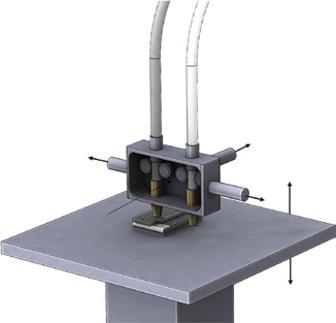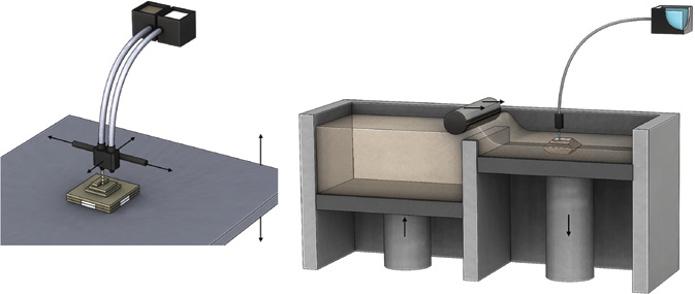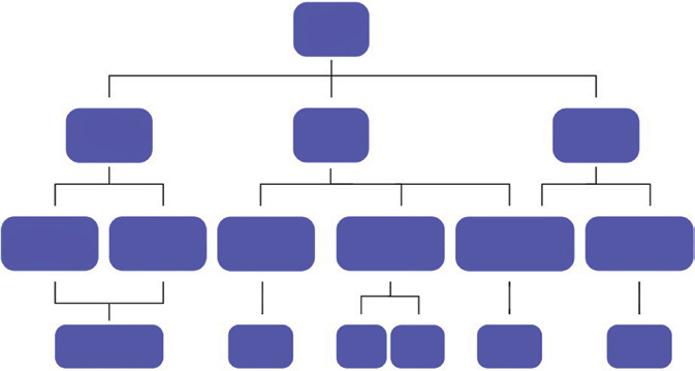Visit to download the full and correct content document: https://ebookmass.com/product/3d-printing-for-energy-applications-vincenzo-esposito /
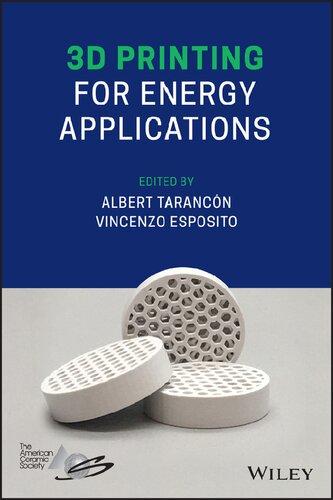
More products digital (pdf, epub, mobi) instant download maybe you interests ...
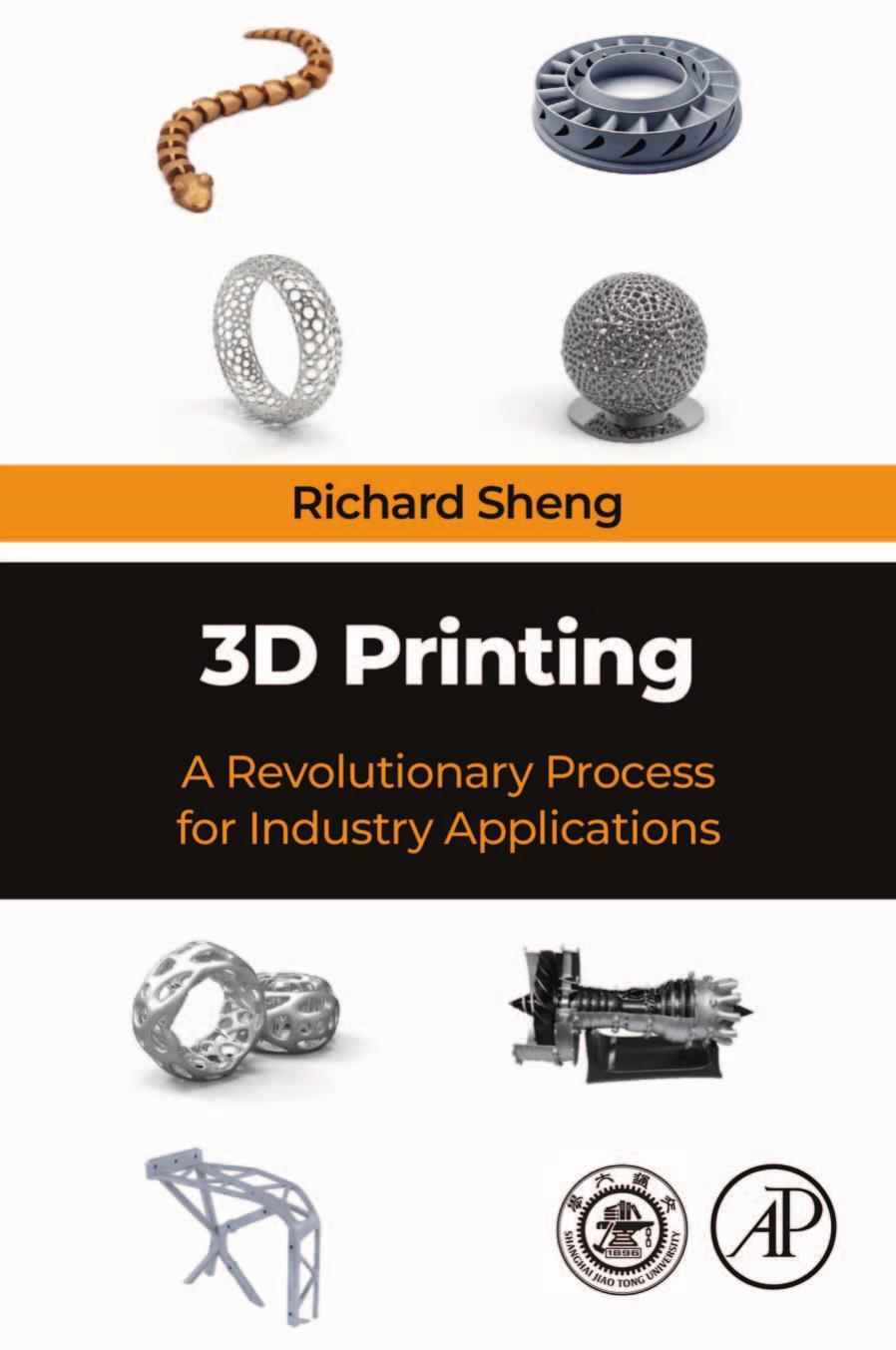
3D Printing: A Revolutionary Process for Industry Applications Richard Sheng
https://ebookmass.com/product/3d-printing-a-revolutionaryprocess-for-industry-applications-richard-sheng/

3D Printing Technology for Water Treatment Applications
Jitendra Kumar Pandey
https://ebookmass.com/product/3d-printing-technology-for-watertreatment-applications-jitendra-kumar-pandey/
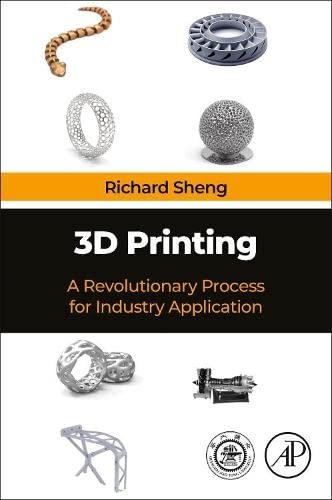
3D Printing Richard Sheng
https://ebookmass.com/product/3d-printing-richard-sheng/
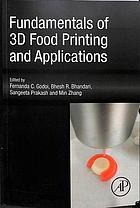
Fundamentals of 3D food printing and applications Godoi
https://ebookmass.com/product/fundamentals-of-3d-food-printingand-applications-godoi/

3D Printing for the Radiologist 1st Edition Nicole Wake
https://ebookmass.com/product/3d-printing-for-theradiologist-1st-edition-nicole-wake/

Multimaterial 3D Printing Technology Jiquan Yang
https://ebookmass.com/product/multimaterial-3d-printingtechnology-jiquan-yang/
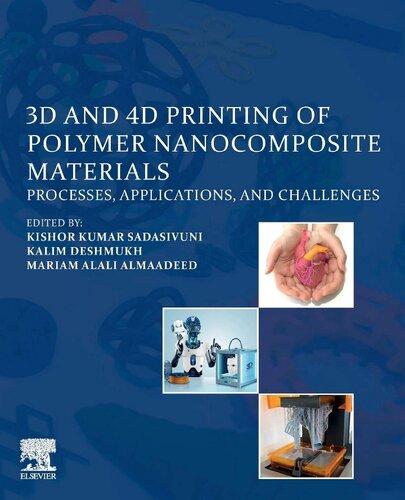
3D and 4D Printing of Polymer Nanocomposite Materials: Processes, Applications, and Challenges 1st Edition Kishor
Kumar Sadasivuni
https://ebookmass.com/product/3d-and-4d-printing-of-polymernanocomposite-materials-processes-applications-andchallenges-1st-edition-kishor-kumar-sadasivuni/

Customized Production Through 3D Printing in Cloud Manufacturing Lin
Zhang
https://ebookmass.com/product/customized-productionthrough-3d-printing-in-cloud-manufacturing-lin-zhang/
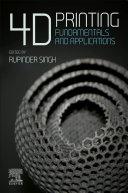
4D Printing: Fundamentals and Applications Rupinder
Singh
https://ebookmass.com/product/4d-printing-fundamentals-andapplications-rupinder-singh/
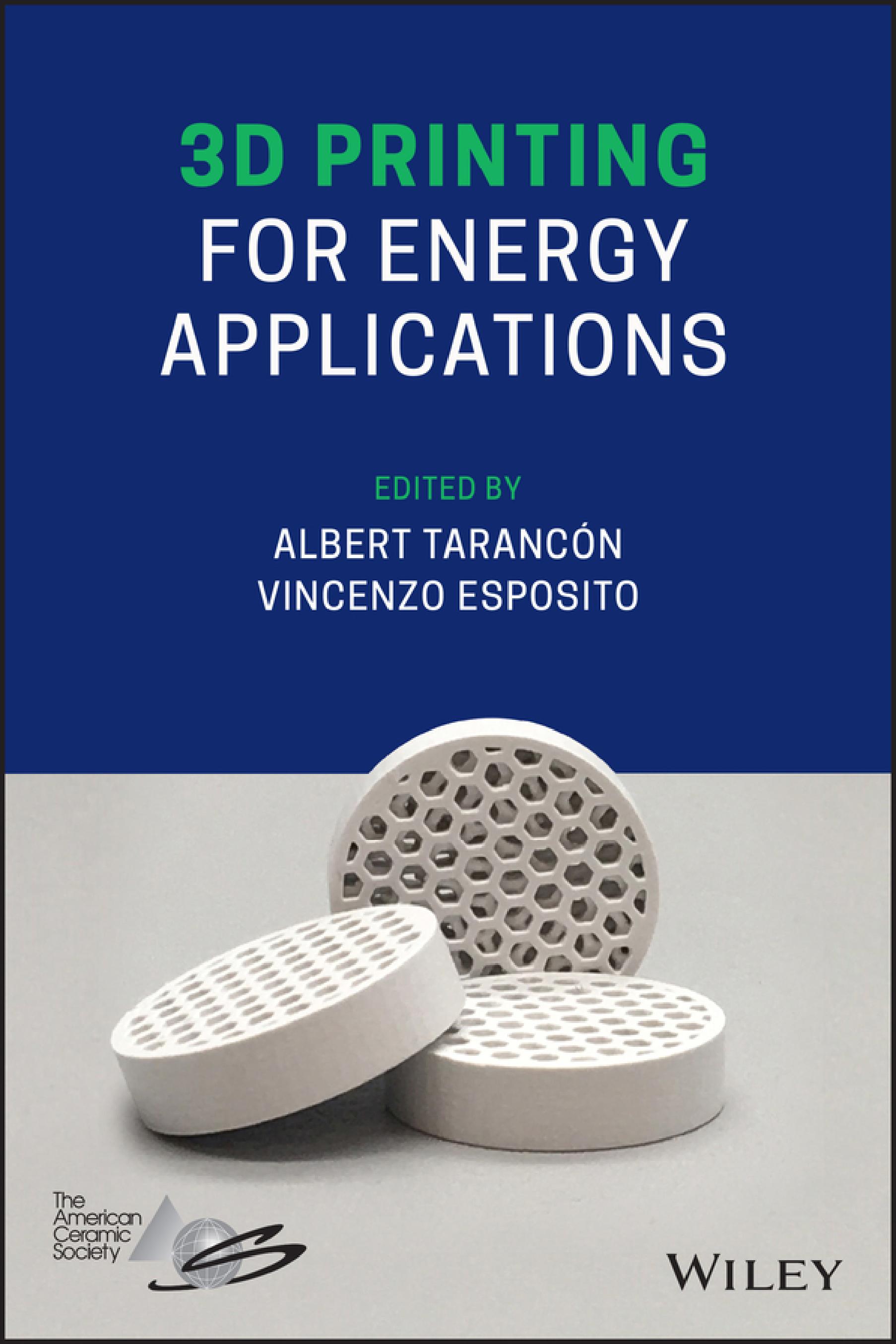
3D Printing for Energy Applications
3D Printing for Energy Applications
Edited by Albert Tarancón
Catalonia Institute for Energy Research and ICREA
Barcelona, Spain and Vincenzo Esposito
Department of Energy Conversion and Storage
Technical University of Denmark
Fysikvej
Lyngby, Denmark
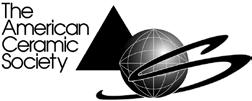
Copyright © 2021 by The American Ceramic Society. All rights reserved.
Published by John Wiley & Sons, Inc., Hoboken, New Jersey.
Published simultaneously in Canada.
No part of this publication may be reproduced, stored in a retrieval system, or transmitted in any form or by any means, electronic, mechanical, photocopying, recording, scanning, or otherwise, except as permitted under Section 107 or 108 of the 1976 United States Copyright Act, without either the prior written permission of the Publisher, or authorization through payment of the appropriate per-copy fee to the Copyright Clearance Center, Inc., 222 Rosewood Drive, Danvers, MA 01923, (978) 750-8400, fax (978) 750-4470, or on the web at www.copyright. com. Requests to the Publisher for permission should be addressed to the Permissions Department, John Wiley & Sons, Inc., 111 River Street, Hoboken, NJ 07030, (201) 748-6011, fax (201) 748-6008, or online at http://www.wiley.com/go/permissions.
Limit of Liability/Disclaimer of Warranty: While the publisher and author have used their best efforts in preparing this book, they make no representations or warranties with respect to the accuracy or completeness of the contents of this book and specifically disclaim any implied warranties of merchantability or fitness for a particular purpose. No warranty may be created or extended by sales representatives or written sales materials. The advice and strategies contained herein may not be suitable for your situation. You should consult with a professional where appropriate. Neither the publisher nor author shall be liable for any loss of profit or any other commercial damages, including but not limited to special, incidental, consequential, or other damages.
For general information on our other products and services or for technical support, please contact our Customer Care Department within the United States at (800) 762-2974, outside the United States at (317) 572-3993 or fax (317) 572-4002.
Wiley also publishes its books in a variety of electronic formats. Some content that appears in print may not be available in electronic formats. For more information about Wiley products, visit our web site at www.wiley.com.
Library of Congress Cataloging-in-Publication Data:
Names: Taranco´n, Albert, editor. | Esposito, Vincenzo, editor.
Title: 3D printing for energy applications / edited by Albert Tarancón and Vincenzo Esposito.
Description: First edition. | Hoboken, New Jersey : Wiley-American Ceramic Society, [2021] | Includes bibliographical references and index.
Identifiers: LCCN 2020031685 (print) | LCCN 2020031686 (ebook) | ISBN 9781119560753 (cloth) | ISBN 9781119560760 (adobe pdf) | ISBN 9781119560784 (epub)
Subjects: LCSH: Three-dimensional printing. | Energy industries–Technological innovations.
Classification: LCC TS171.95 .A165 2021 (print) | LCC TS171.95 (ebook) | DDC 621.9/88–dc23
LC record available at https://lccn.loc.gov/2020031685
LC ebook record available at https://lccn.loc.gov/2020031686
Cover Design: Wiley
Cover Image: © Used with permission with IREC
Set in 9.5/12.5pt STIXTwoText by SPi Global, Pondicherry, India
Contents
Contributor xiii
Introduction to 3D Printing Technologies xvii
Part I 3D printing of functional materials 1
1 Additive Manufacturing of Functional Metals 3 Venkata Karthik Nadimpalli and David Bue Pedersen
1.1 Introduction 3
1.1.1 Industrial Application of Metal AM in the Energy Sector 5
1.1.2 Geometrical Gradients in AM 6
1.1.3 Material Gradients in AM 6
1.2 Powder Bed Fusion AM 7
1.2.1 Geometric Gradients in PBF 8
1.2.2 Material Gradients in PBF 9
1.3 Direct Material Deposition 12
1.3.1 Powder and Wire Feedstock for Near-Net-Shape AM 12
1.3.2 Functional Material Gradients in DED 13
1.4 Solid-State Additive Manufacturing 16
1.5 Hybrid AM Through Green Body Sintering 19
1.5.1 Common AM Technologies for Green Body Manufacturing 19
1.5.2 CAD Design and Shrinkage Compensation 20
1.5.3 Additive Manufacture 20
1.5.4 Debinding and Sintering 21
1.5.5 Functionally Graded Components in Sintered Components 22
1.6 Conclusions 22
Acknowledgment 24
References 24
2 Additive Manufacturing of Functional Ceramics 33
José Fernando Valera-Jiménez, Juan Ramón Marín-Rueda, Juan Carlos Pérez-Flores, Miguel Castro-García, and Jesús Canales-Vázquez
2.1 Introduction 33
2.1.1 Why 3D Printing of Technical Ceramics? 35
2.1.2 Materials and Applications 35
2.2 Ceramics 3D Printing Technologies 36
2.2.1 Lamination Object Modeling (LOM) 37
2.2.2 Ceramics Extrusion 38
2.2.2.1 Robocasting/Direct Ink Writing 39
2.2.2.2 Fused Deposition of Ceramics 42
2.2.3 Photopolymerization 44
2.2.4 Laser-Based Technologies 47
2.2.5 Jetting 49
References 52
3 3D Printing of Functional Composites with Strain Sensing and Self-Heating Capabilities 69 Xin Wang and Jihua Gou
3.1 Introduction 69
3.2 Carbon Nanotube Reinforced Functional Polymer Nanocomposites 70
3.2.1 Strain Sensing of CNT Reinforced Polymer Nanocomposites 70
3.2.2 Resistive Heating of CNT Reinforced Polymer Nanocomposites 71
3.3 Printing Strategies 72
3.3.1 Spray Deposition Modeling and Fused Deposition Modeling 72
3.3.2 Printing of Highly Flexible Carbon Nanotube/Polydimethylsilicone Strain Sensor 73
3.3.3 Printing of Carbon Nanotube/Shape Memory Polymer Nanocomposites 73
3.4 Strain Sensing of Printed Nanocomposites 73
3.5 Electric Heating Performance Analysis 79
3.6 Electrical Actuation of the CNT/SMP Nanocomposites 82
3.7 Conclusions 85
References 87
Part II 3D printing challenges for production of complex objects 91
4 Computational Design of Complex 3D Printed Objects 93
Emiel van de Ven, Can Ayas, and Matthijs Langelaar
4.1 Introduction 93
4.2 Dedicated Computational Design for 3D Printing 95
4.2.1 Overhang Angle Control Approaches 96
4.2.1.1 Local Angle Control 96
4.2.1.2 Physics-Based Constraints 97
4.2.1.3 Simplified Printing Process 97
4.2.2 Design Scenarios 98
4.3 Case Study: Computational Design of a 3D-Printed Flow Manifold 99
4.3.1 Fluid Flow TO 100
4.3.2 Front Propagation-Based 3D Printing Constraint 102
4.3.3 Fluid TO with 3D Printing Constraint 103
4.4 Current State and Future Challenges 104
References 105
5 Multicomponent and Multimaterials Printing: A Case Study of Embedded Ceramic Sensors in Metallic Pipes 109 Cesar A. Terrazas, Mohammad S. Hossain, Yirong Lin, and Ryan B. Wicker
5.1 Multicomponent Printing: A Short Review 109
5.2 Multicomponent Printing: A Case Study on Piezoceramic Sensors in Smart Pipes 111
5.2.1 Brief Introduction to AM of Embedded Sensors for Smart Metering 111
5.2.2 Fabrication of the Embedded Piezoceramic Sensor in Metallic Pipes 114
5.2.2.1 Smart Coupling Fabrication Process Using EPBF Technology 114
5.2.2.2 Materials 116
5.2.2.3 Sensor Housing 117
5.2.2.4 Re-poling of PZT 118
5.2.2.5 Impact in Sensing Properties Due to Heat-Treatment Induced By AM Process 119
5.2.2.6 Smart Coupling Component 119
5.2.2.7 Compressive Force Sensing 119
5.2.2.8 Temperature Sensing 120
5.2.3 Impact of the AM and Performance of the Multicomponent Printed Device 122
5.2.3.1 Compressive Force Sensing 122
5.2.3.2 Temperature Sensing 124
5.2.3.3 Crystalline Structure Analysis 126
5.3 Summary and Outlook 128 Acknowledgments 129
References 130
6 Tailoring of AM Component Properties via Laser Powder Bed Fusion 135
Simon Ewald, Maximilian Voshage, Steffen Hermsen, Max Schaukellis, Patrick Köhnen, Christian Haase, and Johannes Henrich Schleifenbaum
6.1 Introduction 135
6.2 Machines, Materials, and Sample Preparation 138
6.3 Sample Preparation and Characterization Techniques 139
6.4 Material Qualification and Process Development 140
6.5 Tailoring Grain Size via Adaptive Processing Strategies 143
6.6 Tailoring Material Properties By Using Powder Blends 146
6.7 Tailoring Properties By Using Special Geometries Such As Lattice
Structures 148
Funding 150
Conflicts of Interest 150
References 150
7 3D Printing Challenges and New Concepts for Production of Complex Objects 153 Hayden Taylor, Hossein Heidari, Chi Chung Li, Joseph Toombs, and Sui Man Luk
7.1 Introduction 153
7.2 Geometrical Complexity 154
7.3 Material Complexity 155
7.4 Energy Requirements 156
7.5 Promising Metal Deposition Approaches 157
7.6 Multimaterial and Multi-property SLA 159
7.7 Temporal Multiplexing 159
7.8 Resin Formulations with Multiple End-States 160
7.9 Associated Processing Considerations 160
7.10 Bioprinting of Realistic and Vascularized Tissue 162
7.11 Emerging Volumetric Additive Processes 163
7.12 Computation for CAL 166
7.13 Material–Process Interactions in CAL 167
7.14 Current Challenges in CAL 169
7.15 Expanding the Capabilities of CAL 170
7.16 Concluding Remarks and Outlook 171
Acknowledgments 172
References 172 Part III 3D printing of energy devices 181
8 Current State of 3D Printing Technologies and Materials 183 Poul Norby
8.1 3D Printing of Energy Devices 183
8.1.1 Batteries 183
8.1.1.1 3D Printing Structured Electrodes 186
8.1.1.2 3D Printing Solid Electrolytes 195
8.1.1.3 3D Printed Full Batteries 197
8.1.1.4 Conclusion and Outlook 200
References 200
9 Capacitors 205
Lukas Fieber and Patrick S. Grant
9.1 Introduction 205
9.2 Capacitors and Their Current Manufacture 206
9.2.1 Capacitor Classifications, Operating Principles, Applications, and Current Manufacture 206
9.2.1.1 Electrostatic Capacitors 206
9.2.1.2 Electrolytic Capacitors 209
9.2.1.3 Electrochemical Capacitors 210
9.2.2 Capacitor Components: Function and Requirements 211
9.2.3 Performance 213
9.2.4 The Challenge of Manufacturing Capacitors 214
9.3 The Promise of Additive Manufacturing 215
9.4 Additive Manufacturing Technologies: Considerations for Capacitor Fabrication 217
9.4.1 AM Process Categories 217
9.4.1.1 Material Extrusion – Fused Filament Fabrication 217
9.4.1.2 Material Extrusion – Direct Ink Writing 221
9.4.1.3 Vat Polymerization 223
9.4.1.4 Powder Bed Fusion 225
9.4.1.5 Material Jetting 227
9.4.1.6 Binder Jetting 228
9.4.2 Multi-technology or Hybrid Printing 229
9.4.3 Complete Capacitor Devices Fabricated by Additive Manufacturing 230
9.5 Summary and Outlook 232
Acronyms 233 References 235
10 3D-Printing for Solar Cells 249
Marcel Di Vece, Lourens van Dijk, and Ruud E.I. Schropp
10.1 Introduction 249
10.2 Examples of 3D-Printing for PV 250
10.3 Geometric Light Management 255
10.3.1 Background 255
10.3.2 Optical Model for External Light Trapping 257
10.3.3 Design and 3D-Printing of the External Light Trap 260
10.3.4 Characterization 261
10.4 Conclusions 266
References 267
11 3D Printing of Fuel Cells and Electrolyzers 273 A. Hornés, A. Pesce, L. Hernández‐Afonso, A. Morata, M. Torrell, and Albert Tarancón
11.1 Introduction 273
11.2 3D Printing of Solid Oxide Cells Technology 274
11.2.1 Solid Oxide Fuel Cells 275
11.2.1.1 SOFC Electrolyte 276
11.2.1.2 SOFC Electrodes 278
11.2.2 Solid Oxide Electrolysis Cells 283
11.2.3 SOC Stacks and Components 284
11.3 3D Printing of Polymer Exchange Membranes Cells Technology 286
11.3.1 Polymeric Exchange Membrane Fuel Cells 287
11.3.1.1 PEMFC Electrolyte 288
11.3.1.2 PEMFC Catalysts Layer 288
11.3.1.3 PEMFC Gas Diffusion Layer 289
11.3.1.4 PEMFC Bipolar Plates and Flow Fields 290
11.3.2 Polymer Exchange Membrane Electrolysis Cells 293
11.3.2.1 PEMEC Liquid Gas Diffusion Layer 293
11.3.2.2 PEMEC Bipolar Plates and Flow Fields 293
11.3.2.3 Fully Printed PEMEC 294
11.4 3D Printing of Bio-Fuel Cells Technology 294
11.5 Conclusions and Outlook 297 References 297
12 DED for Repair and Manufacture of Turbomachinery Components 307 S. Linnenbrink, M. Alkhayat, N. Pirch, A. Gasser, and H. Schleifenbaum
12.1 Introduction 307
12.2 DED Based Repair of Turbomachinery Components 309
12.2.1 DED Process 310
12.2.2 Work Environment 310
12.2.3 Process Chain for the Repair of Turbine Blades 310
12.2.3.1 Step 1: “Machining & Preparation” 310
12.2.3.2 Step 2: “Reverse Engineering” 311
12.2.3.3 Step 3: “Generation of Tool Paths” 313
12.2.3.4 Step 4: “DED Process” 313
12.2.3.5 Step 5: “Adaptive Machining” 314
12.3 DED Based Hybrid Manufacturing of New Components 314
12.3.1 Hybrid Additive Manufacturing 315
12.3.2 Turbocharger Nozzle Ring 317
12.3.3 Hybrid Production Cell 319
12.3.4 Process Chain for Hybrid Additive Manufacturing of Nozzle Rings 320
12.3.4.1 Step 1: “Choice of DED Strategy” 320
12.3.4.2 Step 2: “DED Process” 321
12.3.4.3 Step 3: “Optical Metrology” 322
12.3.4.4 Step 4: “Adaptive Milling” 322
12.3.4.5 Step 5: “Joining of Top Ring” 322
12.4 Summary 323 Acknowledgments 324
References 324
13 Thermoelectrics 327 Fredrick Kim, Seungjun Choo, and Jae Sung Son
13.1 Introduction 327
13.2 Additive Manufacturing Techniques of Thermoelectric Materials 328
13.2.1 Extrusion-Based Additive Manufacturing Process 328
13.2.2 Fused Deposition Modeling (FDM) Technique 336
13.2.3 Stereolithography Apparatus (SLA) Process 337
13.2.4 Selective Laser Sintering (SLS) Process 339
13.2.5 Summary and Outlook 345 Acknowledgements 345
References 345
14 Carbon Capture, Usage, and Storage 351
Jason E. Bara
14.1 Introduction 351
14.2 Can 3D Printing Be Used to Fabricate a CO2 Capture Process at Scale? 354
14.3 A Brief Note on 3D Printing and CO2 at Smaller Scales & Research Efforts 356
14.4 Conclusions 358 References 358
Index 361
Contributors
Venkata Karthik Nadimpalli
Department of Mechanical Engineering,
Technical University of Denmark, Kgs. Lyngby, Denmark
David Bue Pedersen
Department of Mechanical Engineering,
Technical University of Denmark, Kgs. Lyngby, Denmark
José Fernando Valera-Jiménez
3D‐ENERMAT, Materials for Energy & 3D Printing Lab, Renewable Energy Research Institute, Universidad de Castilla‐La Mancha, Albacete, Spain
Juan Ramón Marín-Rueda
3D‐ENERMAT, Materials for Energy & 3D Printing Lab, Renewable Energy Research Institute, Universidad de Castilla‐La Mancha, Albacete, Spain
And
Print3D Solutions, Albacete, Spain
Juan Carlos Pérez-Flores
3D‐ENERMAT, Materials for Energy & 3D Printing Lab, Renewable Energy Research Institute, Universidad de Castilla‐La Mancha, Albacete, Spain
Miguel Castro‐García
3D‐ENERMAT, Materials for Energy & 3D Printing Lab, Renewable Energy Research Institute, Universidad de Castilla‐La Mancha, Albacete, Spain
Jesús Canales-Vázquez
3D‐ENERMAT, Materials for Energy & 3D Printing Lab, Renewable Energy Research Institute, Universidad de Castilla‐La Mancha, Albacete, Spain
Xin Wang
Composite Materials and Structures Laboratory, Department of Mechanical and Aerospace Engineering, University of Central Florida, Orlando, FL, USA
Contributors xiv
Jihua Gou
Composite Materials and Structures Laboratory, Department of Mechanical and Aerospace Engineering, University of Central Florida, Orlando, FL, USA
Emiel van de Ven
II Optomechatronics Group, Netherlands Organisation for Applied Scientific Research TNO, Delft, The Netherlands
Can Ayas
I Structural Optimization and Mechanics Group, Delft University of Technology, Delft, The Netherlands
Matthijs Langelaar
I Structural Optimization and Mechanics Group, Delft University of Technology, Delft, The Netherlands
Cesar A. Terrazas
W.M. Keck Center for 3D Innovation, The University of Texas at El Paso, El Paso, TX, USA
Yirong Lin
W.M. Keck Center for 3D Innovation, The University of Texas at El Paso, El Paso, TX, USA
Ryan B. Wicker
W.M. Keck Center for 3D Innovation, The University of Texas at El Paso, El Paso, TX, USA
Mohammad S. Hossain
W.M. Keck Center for 3D Innovation, The University of Texas at El Paso, El Paso, TX, USA
Simon Ewald
Digital Additive Production, RWTH Aachen University, Aachen, Germany
Maximilian Voshage
Digital Additive Production, RWTH Aachen University, Aachen, Germany
Steffen Hermsen
Digital Additive Production, RWTH Aachen University, Aachen, Germany
Max Schaukellis
Digital Additive Production, RWTH Aachen University, Aachen, Germany
Patrick Köhnen
Steel Institute, RWTH Aachen University, Aachen, Germany
Christian Haase
Steel Institute, RWTH Aachen University, Aachen, Germany
Johannes Henrich Schleifenbaum
Digital Additive Production, RWTH Aachen University, Aachen, Germany And Fraunhofer Institute for Laser Technology ILT, Aachen, Germany
Hayden Taylor
Department of Mechanical
Engineering, University of California, Berkeley, CA, USA
Hossein Heidari
Department of Mechanical Engineering, University of California, Berkeley, CA, USA
Chi Chung Li
Department of Mechanical Engineering, University of California, Berkeley, CA, USA
Joseph Toombs
Department of Mechanical Engineering, University of California, Berkeley, CA, USA
Sui Man Luk
Department of Mechanical Engineering, University of California, Berkeley, CA, USA
Poul Norby
Department of Energy Conversion and Storage, Technical University of Denmark, Lyngby, Denmark
Lukas Fieber
Department of Materials, University of Oxford, Oxford, UK
Patrick S. Grant
Department of Materials, University of Oxford, Oxford, UK
Marcel Di Vece
Interdisciplinary Centre for Nanostructured Materials and Interfaces (CIMaINa) and Physics
Department “Aldo Pontremoli”, University of Milan, Milan, Italy
Lourens van Dijk
Soluxa B.V., Nijmegen, The Netherlands
Ruud E.I. Schropp
Department of Physics and Astronomy, University of the Western Cape, Belville, South Africa
A. Hornés
Department of Advanced Materials for Energy, Catalonia Institute for Energy Research (IREC), Barcelona, Spain
A. Pesce
Department of Advanced Materials for Energy, Catalonia Institute for Energy Research (IREC), Barcelona, Spain
L. Hernández-Afonso
Department of Chemistry, University of La Laguna, Tenerife, Spain
A. Morata, Department of Advanced Materials for Energy, Catalonia Institute for Energy Research (IREC), Barcelona, Spain
M. Torrell
Department of Advanced Materials for Energy, Catalonia Institute for Energy Research (IREC), Barcelona, Spain
Albert Tarancón
Department of Advanced Materials for Energy, Catalonia Institute for Energy Research (IREC), Barcelona, Spain and
Catalan Institution for Research and Advanced Studies (ICREA), Barcelona, Spain
S. Linnenbrink
Fraunhofer Institute for Laser Technology (ILT), Aachen, Germany
M. Alkhayat
Fraunhofer Institute for Laser Technology (ILT), Aachen, Germany
Contributors xvi
N. Pirch
Fraunhofer Institute for Laser Technology (ILT), Aachen, Germany
A. Gasser
Fraunhofer Institute for Laser Technology (ILT), Aachen, Germany and Chair for Laser Technology (LLT), Aachen, Germany
H. Schleifenbaum
Fraunhofer Institute for Laser Technology (ILT), Aachen, Germany and Digital Additive Production (DAP), Aachen, Germany
Fredrick Kim
School of Materials Science and Engineering, Ulsan National
Institute of Science and Technology (UNIST), Ulsan, Republic of Korea
Seungjun Choo
School of Materials Science and Engineering, Ulsan National Institute of Science and Technology (UNIST), Ulsan, Republic of Korea
Jae Sung Son
School of Materials Science and Engineering, Ulsan National Institute of Science and Technology (UNIST), Ulsan, Republic of Korea
Jason E. Bara
University of Alabama, Tuscaloosa, AL, USA


